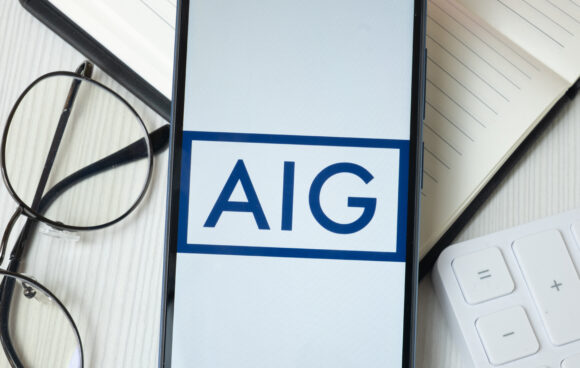AIG could pay dearly for refusing to budge on a claim settlement offer of $2.65 million for nearly a year after receiving estimates that a jury would likely award the claimant $7.5 million for her injuries.
A jury did eventually award $7.5 million in damages and the plaintiff then sued AIG again for not making a prompt and fair settlement offer before the case went to trial. The First Circuit Court of Appeals has ruled that whether AIG should have been more prompt with a fair offer should be decided by a jury. The appeals court vacated a federal district court’s grant of summary judgment on that issue to AIG.
In January 2015, when she was 34 years old, Paula Appleton sustained life-altering injuries in a car accident. Appleton was the passenger in a car that her fiancé, now husband, was driving when a pickup truck struck their car from behind and propelled it underneath the tractor-trailer in front of them, nearly flattening their vehicle. Emergency responders had to extricate Appleton from the car and then transport her to a hospital via helicopter. There, Appleton was diagnosed with severe injuries, including a hemorrhage, pelvic fracture, hip fracture, leg fractures, and a ruptured bladder. She remained in the hospital for nearly three weeks and then spent four months in inpatient rehabilitation facilities.
Appleton eventually filed an insurance claim against the driver of the pickup truck and his employer, a company with a liability insurance policy with National Union Fire Insurance Co., administered by AIG. AIG received notice of Appleton’s claim in December 2015.
Mediations
Appleton’s counsel shared a demand package with AIG in August 2016. The package included a formal demand of $18 million to cover Appleton’s $600,000 medical lien, $3.72 million in future medical care costs, and $13 million in past and future pain and suffering. It also included an analysis of Appleton’s injuries, various medical reports, a life care plan and economic analysis, and a “day in the life” video depicting Appleton’s daily experience living with her injuries.
Over the next two years, from March 2017 to January 2019, Appleton and AIG exchanged settlement offers and expert reports but were unable to settle the case, despite participating in three mediations. In response to Appleton’s initial $18 million demand, AIG offered $750,000 and then raised its offer to $2 million during the mediation. Appleton rejected both offers and requested $17 million instead.
AIG indicated it needed additional evidence of Appleton’s alleged bladder injury and urinary incontinence. Appleton’s counsel shared with AIG reports from two urologists who said that Appleton suffered from “severe incontinence” due to injuries she received during the crash, and who predicted that the incontinence would worsen over time. Despite this additional medical information, however, AIG only increased its settlement offer from $2 million to $2.65 million. Appleton rejected AIG’s offer and demanded $16 million instead.
After that second mediation was unsuccessful, solicited three independent estimates of a potential jury award in Appleton’s case between October 18, 2017, and January 4, 2018. First, defense counsel estimated a jury verdict of between $6.5 million and $8.5 million. Second, a group of senior AIG claims professionals valued the claim at an average of $4.9 million. After receiving these estimates, the insurer increased the reserves to pay Appleton’s claim from $4 million to $7.5 million. Third, AIG hired an external jury consulting firm to conduct a mock trial of Appleton’s case and simulate the results of 500 juries. On January 4, 2018, the consulting firm reported an average total damages award of $7.53 million.
Despite receiving these three estimates of a potential jury award ranging from $4.9 million to $8.5 million by early January 2018, AIG did not increase its prior $2.65 million settlement offer to Appleton for nearly one year, until mid-December 2018.
Appleton and AIG began preparing for trial in the second half of 2018.
At AIG’s urging, Appleton and AIG participated in a third mediation on December 17 and 18, 2018. At the third mediation, AIG increased its previous offer by $600,000, from $2.65 million to $3.25 million. Appleton rejected that offer and made a counter-offer of $15.5 million.
State Trial
About two weeks later, on the eve of trial, AIG increased its offer to $5 million. In January 2019, Appleton served AIG with a demand letter alleging multiple unfair insurance claims settlement practices and seeking $17.5 million. AIG denied the claims and reiterated its most recent offer of $5 million.
Appleton’s state court trial was held from March 11 to 26, 2019. On March 27, the jury awarded Appleton $7.465 million in damages. The jury award consisted of $655,000 in past medical expenses; $3.2 million in future medical expenses; $210,000 in lost earnings; $1.5 million in past pain and suffering; and $1.9 million in future pain and suffering.
(In issuing the final judgment, the state court deducted $600,000 for prior settlements Appleton received from the driver of the pick-up truck and his employer.)
In August 2021, Appleton sued AIG and National Union in federal court, asserting state law claims that AIG and National Union engaged in unfair insurance claims settlement practices in violation of Chapters 93A and 176D of the Massachusetts General Laws. Under Massachusetts law, Chapter 93A and Chapter 176D operate in tandem to encourage the settlement of insurance claims and discourage insurers from forcing claimants into unnecessary litigation to obtain relief. Chapter 93A bars firms from committing “unfair or deceptive acts or practices” and creates a private right of action for consumers injured by those practices. Chapter 176D defines 14 specific actions as “unfair claim settlement practices” that violate Chapter 93A for firms “in the business of insurance” like defendants AIG and National Union.
Claims Practices
Appleton contends that the insurers engaged in two unfair claims settlement practices identified in Chapter 176D: refusing to pay claims without conducting a reasonable investigation based upon all available information and failing to effectuate prompt, fair and equitable settlements of claims in which liability has become reasonably clear.
The district court granted summary judgment to AIG on both claims. It held that the facts demonstrated that AIG began its investigation of Appleton’s insurance claim “within weeks of receiving its first notice,” “went beyond simply ‘reviewing the materials submitted with [the] claim,'” and “continued to investigate throughout the course of the underlying action.” The district court then concluded that such an investigation was reasonable as a matter of Massachusetts law and granted the AIG summary judgment on that Appleton claim. The court also determined that the defendants were entitled to summary judgment on Appleton’s second claim, finding that the facts established that liability never became reasonably clear and, as a result, AIG’s duty to extend a prompt and fair settlement offer was never triggered.
The First Circuit Court of Appeals agreed with the lower court on the first claim that AIG had properly investigated. However, it disagreed with the dismissal of the second claim, questioning whether AIG had done what it should to accomplish a prompt, fair and equitable settlement. The appeals court agreed with Appleton that the damages became reasonably clear in early January 2018 when AIG got its three estimates averaging $7.5 million. Yet, the insurer waited until January 2019 on the eve of trial before upping its offer beyond $2.65 million.
The appeals court noted that the legal standard for examining the defendants’ response is “whether, in the circumstances, and in light of the complainant’s demands, the offer is reasonable.'” Importantly, the defendants had this legal duty even if Appleton made excessive demands.
The court said the question thus became whether a reasonable jury could find that the insurers failed to put a prompt, fair, and equitable offer on the table after January 2018, which is when liability became reasonably clear. At trial, it would be the insurers’ burden “to prove that $2.65 million was a reasonable offer in the circumstances and in light of Appleton’s demands.”
Jury Consideration
Massachusetts law provides several guideposts for a jury evaluating the fairness of a settlement offer. The jury could compare AIG’s offer to AIG’s own evaluation of Appleton’s claim, as well as the eventual state trial jury verdict. It also could take into account the course of the parties’ negotiations, as “experienced negotiators do not make their final offer first off, and experienced negotiators do not expect it, or take seriously a representation that it is.” Further, the jury could consider Appleton’s demands “as part of the over-all circumstances affecting the amount that would qualify as a reasonable offer in response.” The court added that an insurer is not held to standards of perfection, so its “good faith, but mistaken, valuation of damages does not constitute a violation of Chapter 176D.
The appeals court said that the district court did not evaluate if there was a genuine dispute of material fact about whether the defendants’ settlement offers in 2018 were prompt and fair. Viewing the record in the light most favorable to Appleton, the First Circuit concluded that such a genuine dispute of fact existed. Most importantly, the record demonstrates that for almost a year after receiving the three jury award estimates ranging from $5 million to $8.5 million, AIG did not increase its previous settlement offer of $2.65 million.
Modest Increase
When AIG finally did raise its settlement offer during the third mediation in mid-December 2018, it did so by only $600,000, for a total of $3.25 million, which the appeals court called a “modest increase” that came 14 months after receiving the two estimates ranging from $5 million to $8.5 million and almost a year after receiving the jury consulting firm’s $7.5 million estimate.
Next, the court noted that a jury could consider several years had passed since the accident, and thus the $2.65 million offer on the table in early 2018 was not AIG’s initial offer or even its second offer. Finally, a jury could conclude that the actual $7.5 million award Appleton received supports the conclusion that AIG’s settlement posture throughout 2018 was not fair or equitable.
“A reasonable jury could conclude that AIG’s decision to stick with this offer for nearly a year after damages of about $7.5 million became reasonably clear was neither fair nor equitable, even when considering Appleton’s $16 million demand as part of the over-all circumstances,” the First Circuit appeals court concluded in vacating the district court’s grant of summary judgment.
Was this article valuable?
Here are more articles you may enjoy.



 Former CEO of Nonprofit P/C Statistical Agent Sentenced for Stealing Millions
Former CEO of Nonprofit P/C Statistical Agent Sentenced for Stealing Millions  Court Ruling Could Help Shed Light on Owners of Litigation Funders, Medical Clinics
Court Ruling Could Help Shed Light on Owners of Litigation Funders, Medical Clinics  Twice Injured Firefighter Loses Second Workers’ Compensation Claim
Twice Injured Firefighter Loses Second Workers’ Compensation Claim  ‘Door Knocker’ Roofers Were Everywhere. NC Farm Bureau Saw an Opportunity
‘Door Knocker’ Roofers Were Everywhere. NC Farm Bureau Saw an Opportunity 

